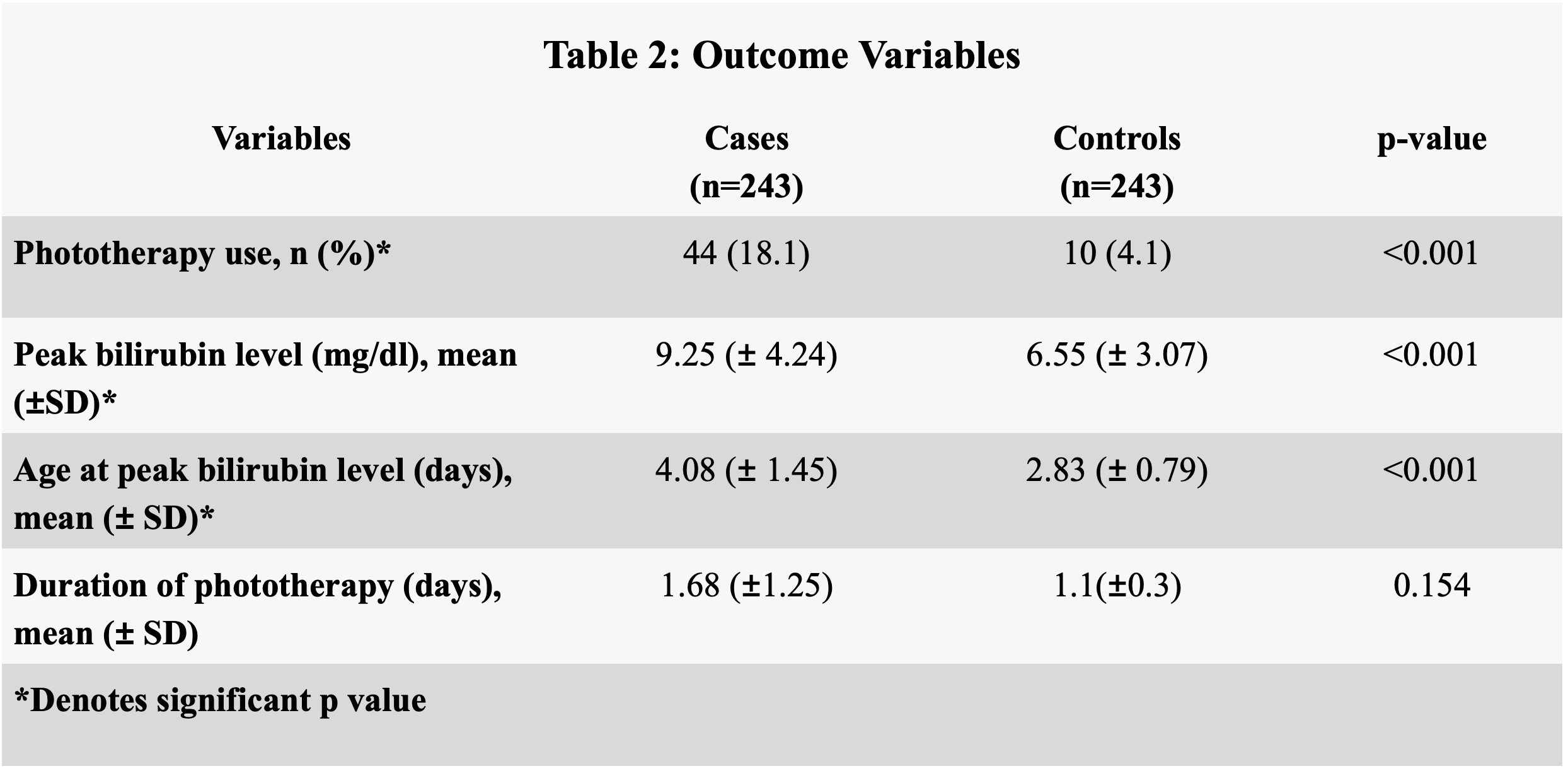Neonatal General
Neonatal General 9: NOWS and Other Exposures
205 - Effect of In Utero Opiate Exposure in Management of Hyperbilirubinemia of Infants
Sunday, April 30, 2023
3:30 PM - 6:00 PM ET
Poster Number: 205
Publication Number: 205.333
Publication Number: 205.333
Kinnera Are, Southern Illinois University School of Medicine, Springfield, IL, United States; Maha S. Majjiga, University of Illinois at Chicago, Chicago, IL, United States; Ginger Darling, SIU School of Medicine, Springfield, IL, United States; Albert Botchway, Southern Illinois University School of Medicine, Springfield, IL, United States; Erin Bauer, Southern Illinois University School of Medicine, Springfield, IL, United States; Mohamed F. Ahamed, Southern Illinois University School of Medicine, Springfield, IL, United States

Kinnera Are, DO (she/her/hers)
Pediatric Resident
Southern Illinois University School of Medicine
Springfield, Illinois, United States
Presenting Author(s)
Background: Non-pharmacological measures which reduce stimulation and minimize exposure to light and sound are the mainstay of treatment of neonatal opioid withdrawal syndrome (NOWS) with medications reserved for those infants who do not respond to non-pharmacological measures. There is some concern clinically that initiating phototherapy for hyperbilirubinemia may worsen the symptoms of withdrawal and increase the need for pharmacological therapy for those symptoms. However, this has not been previously studied.
Objective: To determine the:
- Impact of phototherapy on the need for pharmacotherapy in NOWS.
- Impact of NOWS on the need for phototherapy, and peak bilirubin levels.
Design/Methods: A retrospective case control study of infants exposed to opiates in utero in our 60-bed level III NICU (~700 admissions annually, ADC: 45) from 1/2016-6/2021. Infants with in utero exposure to opiates were matched to healthy controls from the newborn nursery by gestational age (GA) (±1 week), birth weight (BW) (±10%), and gender. Need for phototherapy, duration of phototherapy treatment, and peak bilirubin levels were compared between the two groups. Necessity of pharmacotherapy was assessed based on phototherapy utilization in the cases. Descriptive statistics were utilized for demographics and variables were compared using independent t-test for continuous variables and Fisher's exact test for categorical variables.
Results: 243 cases were compared to 243 controls. Baseline characteristics for both groups are presented in Table 1. The peak bilirubin levels were higher in the cases compared to controls (9.2 vs 6.6, p< 0.001) and occurred later (4d vs 2.8d, p< 0.001). Need for phototherapy was higher in cases compared to controls (18.1% vs 4.1%, p< 0.001) (Table 2), however the mean duration of phototherapy did not differ significantly between the groups (p=0.154). There was no significant difference in the need for pharmacotherapy in those cases who required phototherapy when compared with those that did not require phototherapy (p=0.188) (Table 3).
Conclusion(s): Our data supports the hypotheses that infants exposed to opiates in utero are at a higher risk for development of hyperbilirubinemia requiring phototherapy. Our findings suggest the bilirubin level also peaks later in these infants. Regardless, phototherapy was not shown to increase the need for pharmacotherapy for opioid withdrawal symptoms.
.png)


